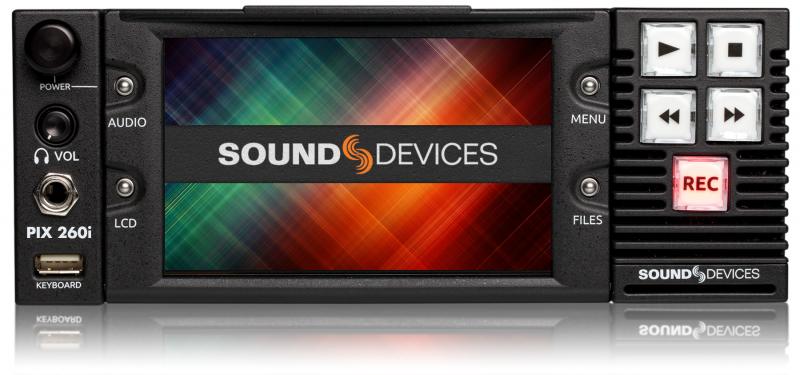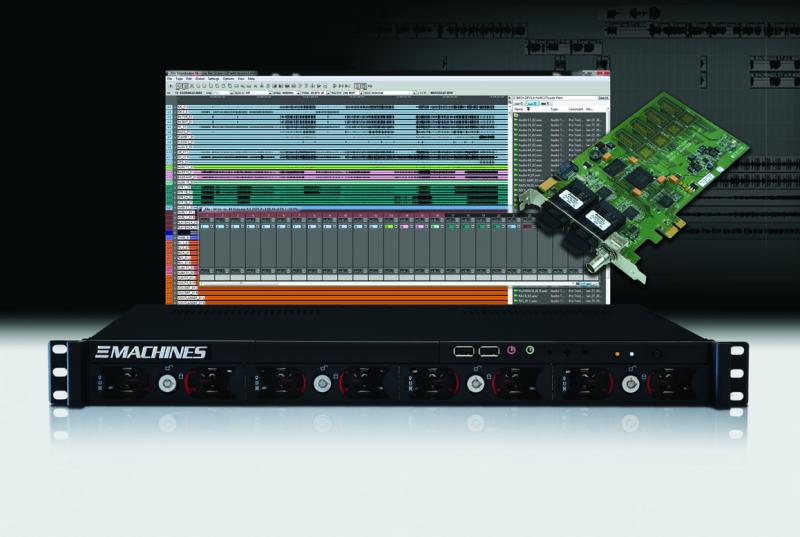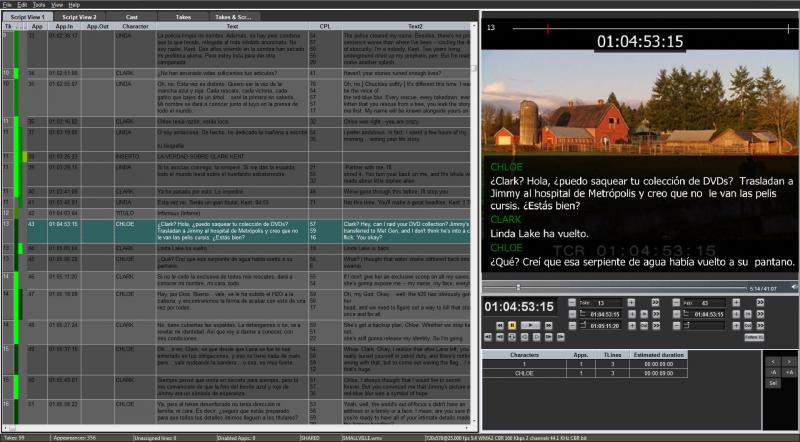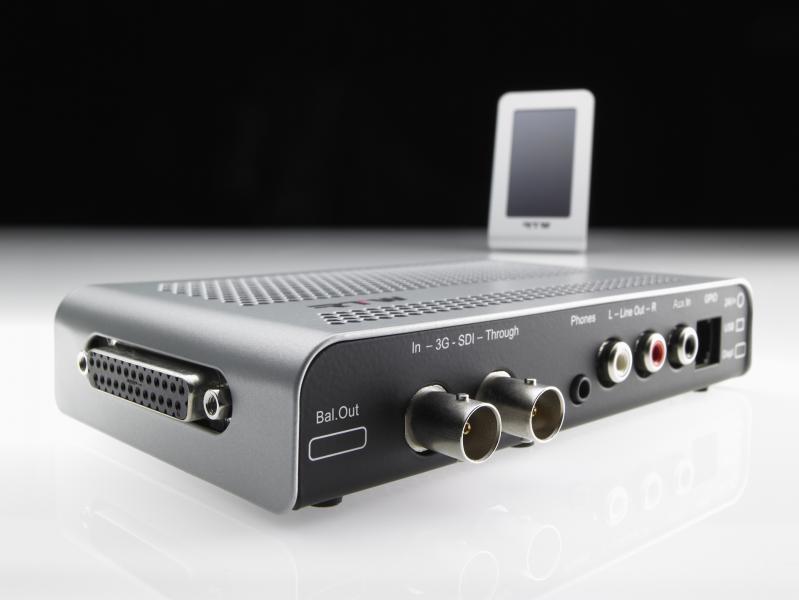Hot new technology and solutions at AES
I always know fall is coming when it’s time to attend the Audio Engineering Society (AES) convention. This year’s event is being held in San Francisco, Woo Hoo!

The convention alternates between New York and SFO, but I’ll always take SFO as the better location. First, the convention center is more convenient and the city just seems a better place to play. Trolleys, Coit Tower and of course, Fisherman’s Wharf. For me, that beats a bus ride to and from Javitts anytime.
After touring the convention floor on day one, what did I find? First of all, I met Andrew Kornstein. He is Sennheiser’s Market Development person for House of Worship. What was interesting is that he just happens to live a few miles from me in Kansas City! Who knew we’d travel a thousand miles to meet at a trade show.
DPA microphones
In talking with DPA’s technical sales peron, Bryce Boynton, I mentioned that I felt that audio was sometimes considered the step child of television. While loudness has recently gotten more than its fair share of attention, when it comes to capturing sound, many TV engineers are left with antiquated tools, and perhaps similarly dated skills.
Boynton offered a solution every TV audio person should checkout.
DPA microphones maintains a web site crammed with tutorials on microphones, their selection use, and selection. Engineers can learn about a variety of technology focused on the use of microphones. For instance, need to test a microphone, there’s a tutorial.
Get the TV Tech Newsletter
The professional video industry's #1 source for news, trends and product and tech information. Sign up below.
There are guides on “Electronics designs in microphones”, “Instruments and acoustics with microphones” and many more.
And you won’t be find the information overly sales oriented. It’s good tutorial, check it out.
Sound Devices
I then moved over to the Sound Devices booth and talked with Managing Director, Jon Tatooles. He showed me theSound Devices’ 664 Production Mixer. The mixer provies six input channels with dedicated controls for trim, fader, pan and PFL. The inputs and four output buses are all recordable, providing a total of 10 tracks of record channels.

The 664 contains six ultra-low noise, high-dynamic range and transformer-less preamps, which accept mic- or line-level signals and include analog peak limiters, high-pass filters, input trim control and direct outputs on every channel. The 664 also has numerous digital capabilities. Inputs 1 and 6 can be selected as AES3 or AES42 inputs for digital microphones, each with its own SRC for simplicity in system clocking.
The analog output compliment includes four output buses. The L and R buses are on balanced XLR, 10-Pin and TA-3M connectors; unbalanced on TA-3M or 3.5mm connectors. Secondary output buses X1 and X2 are available on balanced TA-3M connectors. Inputs and buses can be routed to four AES3 connections for eight digital outputs on the XLR and 10-pin connectors.
I’m not used to mixers actually recording signals, but the 664 can record up to 10 tracks of 16- or 24-bit broadcast WAV files to SD and/or Compact Flash cards. All inputs and outputs are individually selectable for recording, again enabling the mixer to record all 10 channels of audio. With its dual card slots, content can be recorded to either or both cards simultaneously, with the added ability to assign different tracks to each memory card.
The mixer even has an Ambient-based time-code generator/reader for multi-camera and double-system sound applications. All common production time-code rates and modes are supported. Sound Devices has a demonstration video for those who’d like to know more.
I was a bit surprised to see a video recorder at AES, but Sound Devices was showing off it’s PIX 260i Production Audio/Video Recorder. Based on the company’s PIX 240i recorder, the rack-mounted PIX 260i is a file-based audio/video deck that seamlessly replaces tape-based video decks in production and post-production environments, while offering 32-tracks of audio record/playback.

Tatooles said “We are excited to showcase the PIX 260i at AES. Its impressive 32-tracks of audio record and playback is a great feature for many audio professionals. Our entire line of PIX recorders provides users with an all-in-one audio and video product.”
Using Apple ProRes or Avid DNxHD codecs, the PIX 260i records and plays files at up to 220 Mbps in 10-bit 4:2:2 video. It also records 32 tracks of 48-kHz audio. In addition to 16 channels of embedded SDI audio and eight channels of HDMI audio, the PIX 260 also accepts eight channels of line-level analog I/O and eight channels of AES digital audio. Using Dante, the PIX 260i can accept and transmit up to 32 channels of audio over Ethernet.
The recorder has a built-in, five-inch 800- x 480-pixel IPS video display providing an intutive interface for viewing video and setup-menu selections. The PIX 260i can be controlled by both external RS-422 and via Ethernet through its embedded Web server, allowing for machine transport control over Ethernet-based networks.
Tatooles showd me how easy it is to connect up to four SATA drives from the front panel. If you need RAID-type redundancy users can recorder to all four drives simultaneously.
Clear-Com
Clear-Com has a new set of intercoms and configuration software. Introduced at IBC, 2012 were the Eclipse HX Digital Matrix Systems series and Eclipse HX (EHX) Configuration Software. Together This powerful matrix intercom offers faster performance, simplified operations and administration and higher system capacity.
The Eclipse HX systems, comprising the Eclipse HX-Omega, Eclipse HX-Median and Eclipse HX-PiCo, as well as the EHX software, are based on the original, powerful and comprehensive Eclipse digital matrix platform. All retain the legacy platform’s unique integration capabilities. Additionally, Clear-Com’s V-Series panels, frame cards and interfaces are compatible with the new Eclipse HX range, providing a seamless logical upgrade path for existing Eclipse customers. What sets Eclipse HX apart from the original Eclipse line are improvements in the software architecture, user interface and system capacity.
Said Peter Stallard, Senior Product Manager, Eclipse, Clear-Com, “In broadcast facilities where matrix intercom systems and resources are often shared across multiple studios, having fast and highly intuitive systems is critical when scarce engineering resources are needed to execute system-wide changes reliably, in real-time and with minimal impact on system users. Also, the Eclipse HX systems have the ability to make changes on the fly, which is especially important in OB vans and other live operations.”
SSL
Solid-State Logic’s (SSL) Head of Marketing, Dan Duffell, showed me their “Live-Recorder” system. He says the ensemble offers significant cost-saving opportunities when compared to hard disk recorders or other DAW recorder systems. First, the Live-Recorder system connects via standard optical MADI, so it can interfaces directly to other MADI-equipped digital mixing consoles, venue audio distribution infrastructure (Riedel, Optocore, etc.) or broadcast routers.

Second, Live-Recorder combines Soundscape V6.2 DAW recorder/player software and a MadiXtreme or MX4 PCIe audio interface with an industrial-strength, high-performance 1U rack-mounted PC. The Soundscape 6.2 software is a powerful audio-only multi-track DAW recorder/player. Soundscape V6.2 has SSL’s “Pro-Convert” technology built in, so it can export recorded multi-track sessions in a range of formats native to a selection of popular DAW packages for editing and mixing. The Soundscape V6.2 software provides comprehensive non-linear editing capabilities plus the capacity to add extensive notes and metadata.
Duffell said SSL offers two different Live-Recorder hardware configurations. The Live-Recorder MX4 provides up-to-128-channels of recording utilizing an SSL MX4 2x64 channel MADI I/O interface. The Live Recorder 128 is a stripped-down system designed for environments where no confidence monitoring is required. It utilizes an SSL MadiXtreme 2- x 64-channel MADI I/O interface for direct optical MADI connection to consoles, routers.
SSL also was demonstrating it’s new ScreenSound ADR, which is designed to optimize and standardize Automatic Dialogue Replacement for Film, Foley recording and local language replacement for Film & TV. ScreenSound ADR provides an end-to-end solution enabling a faster and more efficient ADR workflow.

ScreenSound ADR is a turnkey system that combines a suite of integrated software applications providing dialogue spotting & session preparation, session control & management and streamlined audio recording, with an industrial strength hardware platform including host computer, I/O and Nucleus hardware control surface.
At the heart of the workstation is SpotFire, a dedicated session management and automated ADR interface which provides complete control of studio session workflow. SpotFire offers a unique interface that combines a ‘rehearse - record – review’ based transport control panel with a versatile and customizable Take List that makes viewing, navigating and controlling the recording process simple and efficient. SpotFire relies on SSL’s Soundscape DAW as the underlying platform for recording, editing and mixing with all track arming, transport and recording functions controlled entirely by SpotFire’s dedicated ADR interface
ScreenSound ADR is a turnkey hardware based system including: a Nucleus hardware control surface with uniquely customizable hands on control for accelerated operation; SSL’s Alpha-Link audio converters providing versatile and scalable I/O options and recording and monitoring provided by the SSL MX4 software mixer environment providing a standard mixer templates and open architecture routing flexibility
RTW
RTW was exhibiting at AES showing their latest line of visual audio meters for professional broadcast, production, post production and quality control. Highlighted in the booth is the new version of its successful TouchMonitor TM3, called TouchMonitor TM3-3G. The TM303G seamlessly allows the TM3’s current hardware and software design to visualize, convert and replay 3G SDI signals in TV and video production and post production applications, offering a feature set unrivalled in its class.

The TouchMonitor TM3-3G is a compact solution for metering, de-embedding and monitoring 3G SDI audio. It features a 4.3-inch touchscreen for horizontal as well as vertical orientation and can display any of the eight audio channels contained in a 3G SDI stream.
A large number of graphical and numerical parameters can be displayed; single-channel and summing loudness bargraphs, PPM, true peak, SPL, loudness range (LRA), dialnorm and correlation. The TM3 offers comprehensive loudness metering in compliance with all globally relevant standards (EBU R128, ITU BS.1770-2/1771, ATSC A/85 and ARIB). It also features the Magic LRA mode, specifically designed by RTW, for intuitive visualization of the loudness range and integrated-loudness parameters.
Well, that's it for day one. Come back tomorrow and I'll show you what else I found.
